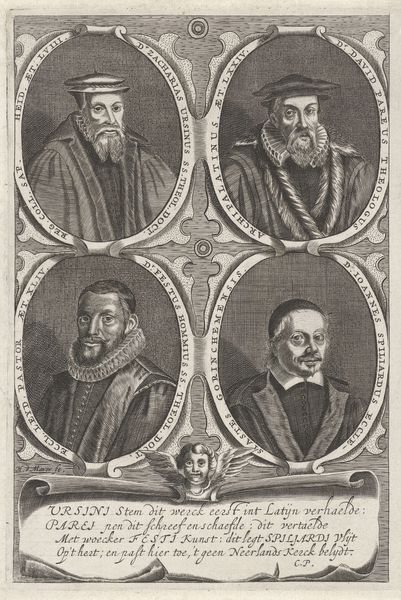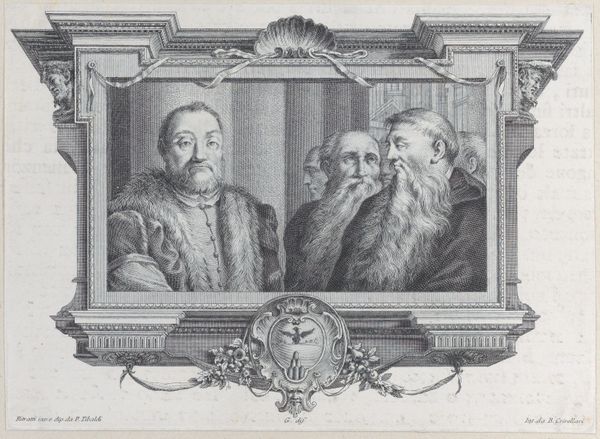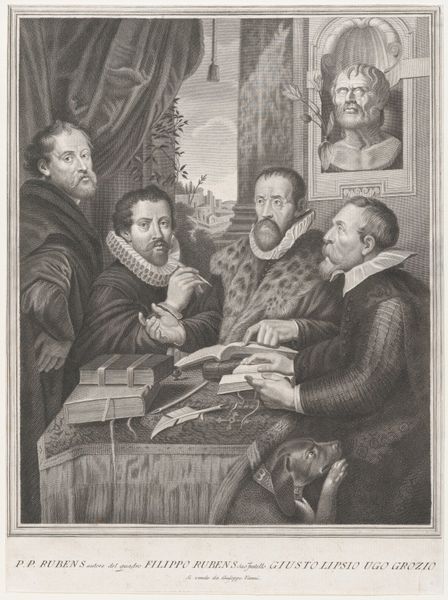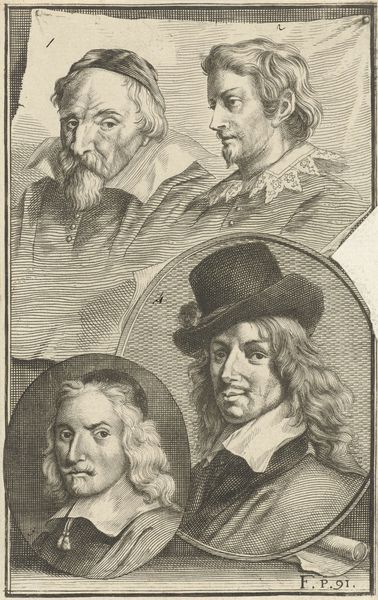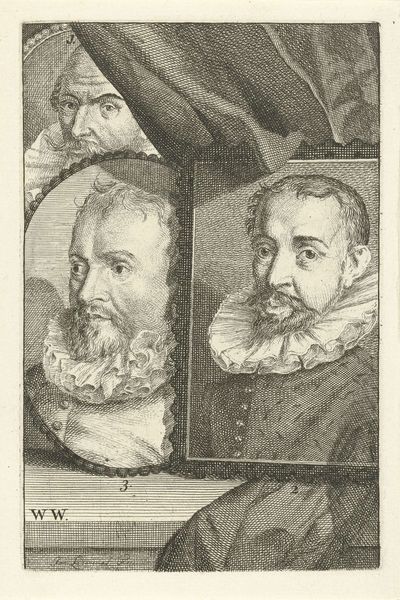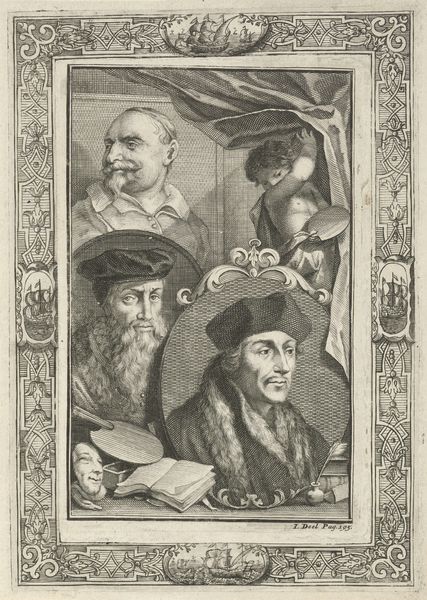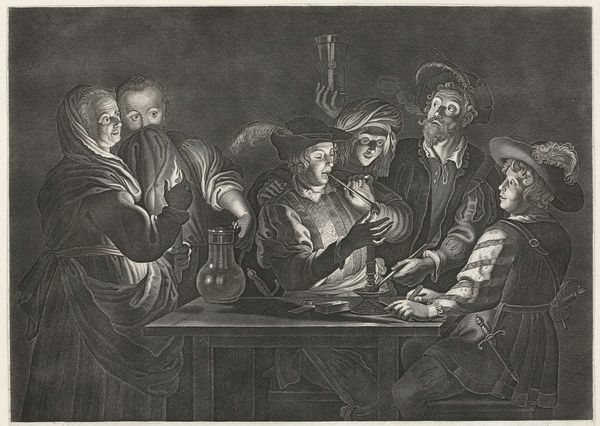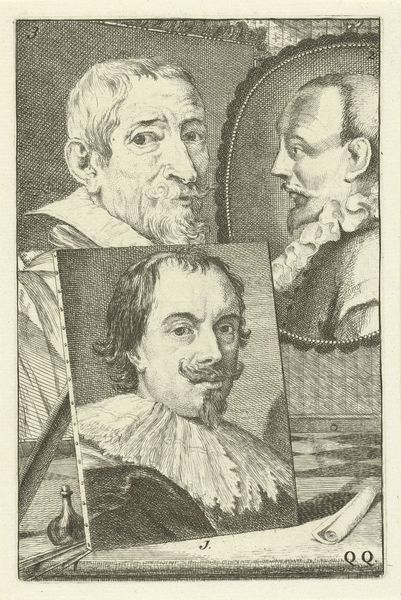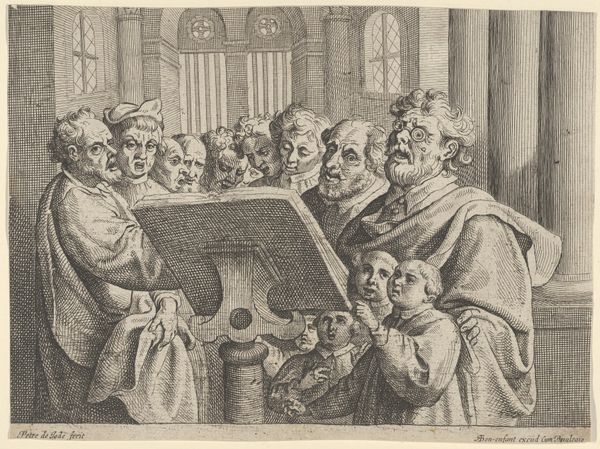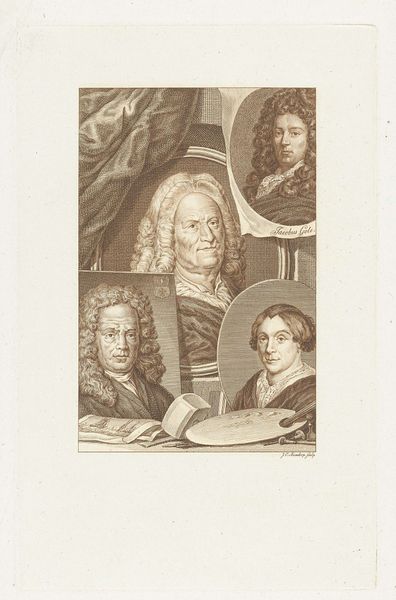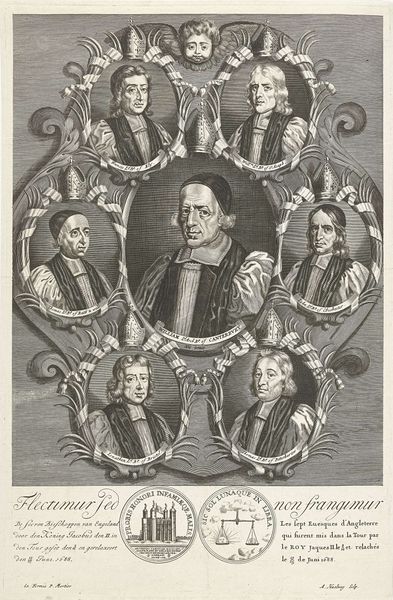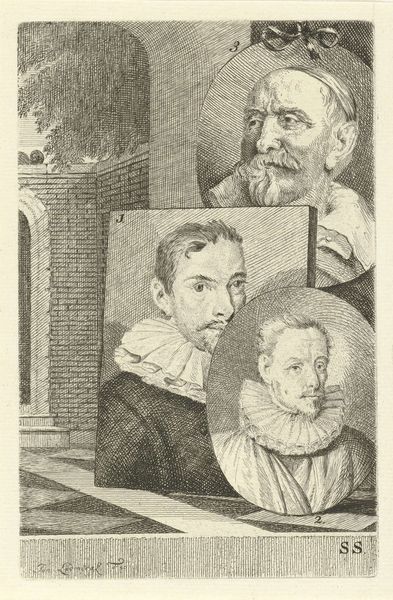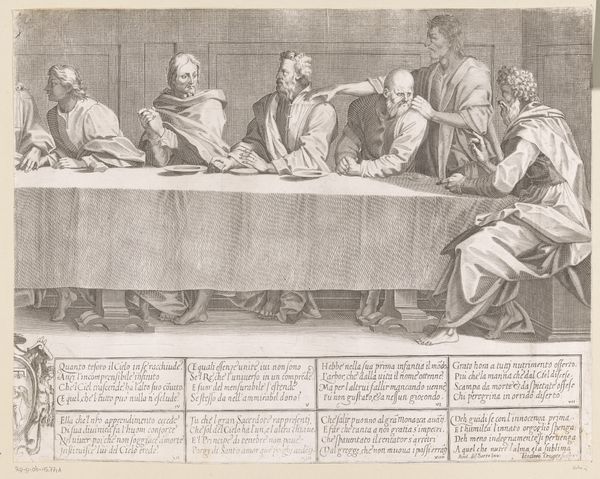
painting, oil-paint
#
portrait
#
baroque
#
painting
#
oil-paint
#
group-portraits
#
genre-painting
Dimensions: height 147 cm, width 220 cm
Copyright: Rijks Museum: Open Domain
Editor: This is Allaert van Loeninga's "The Regents of the House of Correction of Middelburg, 1643," an oil painting capturing a group of men. The figures seem very formal, serious almost, with their dark robes and starched collars. What strikes me is how each face, while similar in tone, tells its own story. What do you see in this piece, beyond just a group portrait? Curator: It's interesting that you pick up on the individuality within the group, because group portraits of this era, especially of regents, often employed symbolism to reinforce power and order. Yet, here, the stark lighting on each face seems to highlight individual character. Consider the open book at the table's center. What does that evoke for you? Is it knowledge, power, transparency? Editor: Perhaps it's all those things? Knowledge because it’s a book, power because they're using that knowledge to govern, transparency maybe because it's open, as if available for all to see… though we can’t see what’s written inside. Curator: Precisely. That ambiguity is crucial. The open book becomes a symbol for the House of Correction itself – the potential for reform and betterment that’s offered but never fully revealed or guaranteed. Note too the sword hilt just visible on the lower right. It's a signifier of authority, yes, but its partial concealment also hints at something less overt, less spoken, than their stated purpose. These objects work together with the severe style to really create meaning. Editor: So, even a seemingly straightforward portrait of authority figures can hold layers of symbolic meaning about governance and perhaps even the limits of that authority. Curator: Indeed. And it challenges us to look beyond the surface to consider the nuanced psychology embedded within seemingly formal compositions, offering an alternative perspective into their history and society. Editor: This really changes how I look at group portraits now. There is so much more than what meets the eye. Thanks for all the insights!
Comments
No comments
Be the first to comment and join the conversation on the ultimate creative platform.
